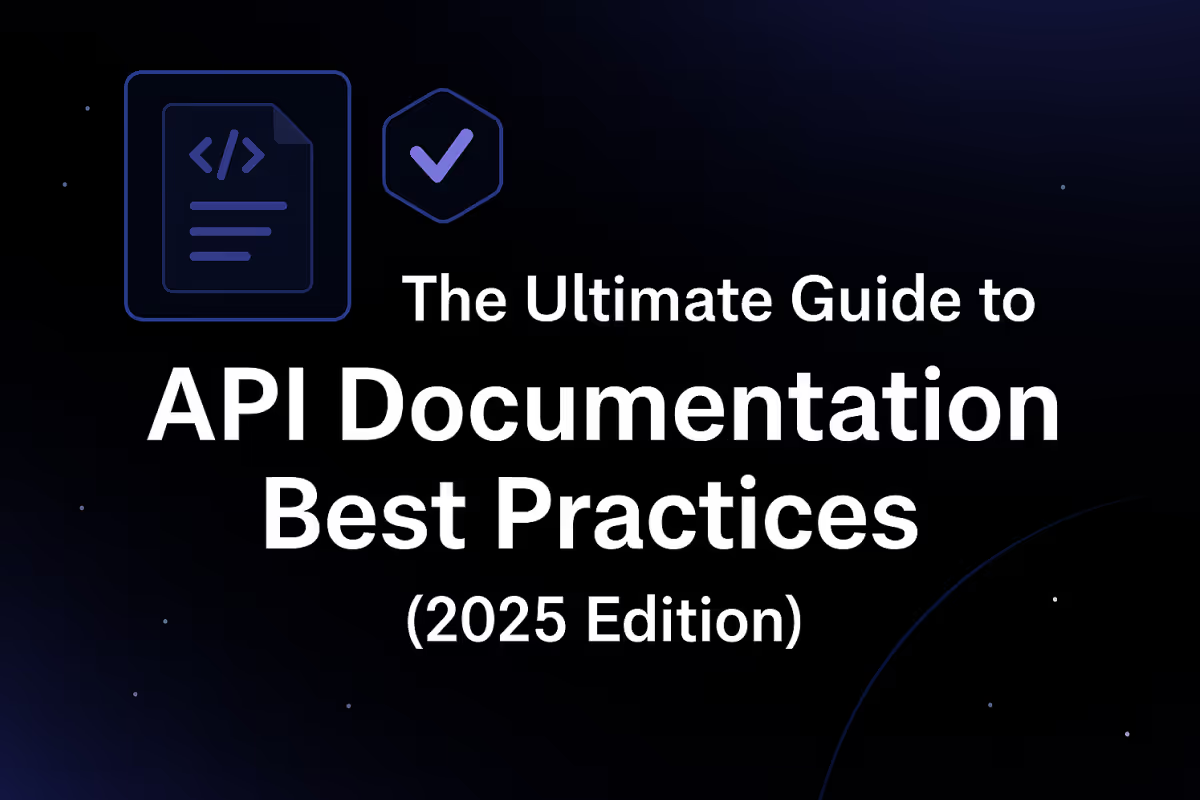Securing Your API: Best Practices for API Security
Discover the best practices for securing your API and protecting your data from potential threats.

In today's digital landscape, application programming interfaces (APIs) play a crucial role in establishing effective communication between different software systems. However, the increasing use and dependence on APIs also brings along the need to ensure their security. API security is paramount to protect sensitive data and prevent unauthorized access or misuse of valuable resources. This article will delve into the best practices for API security, explaining the key elements and techniques that can help safeguard your API from potential threats.
Understanding API Security
API security involves implementing robust measures to prevent unauthorized access, data breaches, or attacks on your API. It aims to establish a secure environment that fosters trust and confidence among users and partners who interact with your API.
When it comes to API security, it is crucial to understand the importance of protecting your API from potential threats. APIs enable the exchange of data and functionality between multiple systems, making them a prime target for cybercriminals. Breaches in API security can lead to severe consequences, including data leaks, financial loss, and damage to brand reputation. Therefore, it is essential to prioritize API security as an integral part of your overall security strategy.
The Importance of API Security
API security plays a vital role in ensuring the integrity and confidentiality of the data being transmitted through your API. By implementing robust security measures, you can protect sensitive information from unauthorized access and ensure that only authorized users can interact with your API.
One of the key reasons why API security is crucial is the potential impact of data breaches. In today's digital landscape, data is a valuable asset, and cybercriminals are constantly looking for ways to exploit vulnerabilities in systems. Breaches in API security can result in the exposure of sensitive customer data, such as personal information, financial details, or even intellectual property. The consequences of such breaches can be devastating, both for the affected individuals and for the reputation of the organization responsible for the API.
Moreover, API security is not only about protecting data but also about maintaining the availability and reliability of your API. Cybercriminals may launch denial-of-service (DoS) attacks to overload your API's resources, rendering it unavailable to legitimate users. Such attacks can cause significant disruption in service and result in financial losses for businesses that rely on the API for their operations.
Common API Security Threats
Before diving into best practices for API security, it is essential to understand the common threats that APIs face. By being aware of these threats, you can better prepare and implement appropriate security measures to mitigate the risks.
- API Abuse: Malicious users may exploit your API endpoints to perform activities beyond the intended scope or purpose. For example, they may attempt brute force attacks to gain unauthorized access or scrape sensitive data from your API. Implementing rate limiting, access controls, and monitoring mechanisms can help mitigate the risk of API abuse.
- Injection Attacks: Hackers can attempt to inject malicious code or SQL queries into API requests, aiming to manipulate or gain unauthorized access to the underlying systems. To prevent injection attacks, it is crucial to implement input validation and sanitization techniques, as well as parameterized queries when interacting with databases.
- Denial-of-Service (DoS) Attacks: Attackers may overload your API's resources by flooding it with a high volume of requests, rendering it unavailable to legitimate users. Implementing measures such as rate limiting, load balancing, and traffic monitoring can help mitigate the risk of DoS attacks and ensure the availability of your API.
- Insufficient Authorization and Authentication: Weak or flawed authentication mechanisms can lead to unauthorized access to sensitive data or functionalities. It is crucial to implement strong authentication mechanisms, such as multi-factor authentication, and enforce proper authorization checks to ensure that only authorized users can access your API's resources.
By understanding these common API security threats, you can take proactive steps to protect your API and the data it handles. Implementing a comprehensive security strategy that addresses these threats will help create a secure and trusted environment for your API users and partners.
Key Elements of API Security
To ensure the security of your API, it is crucial to implement the following key elements:
Authentication and Authorization
Authentication verifies the identity of the user or system making the API request. It ensures that only authorized entities can access specific resources or perform certain actions. Proper authentication mechanisms, such as API keys, tokens, or OAuth, should be implemented to authenticate and authorize API requests.
Implementing a robust authentication and authorization system is vital for API security. It helps protect sensitive data and ensures that only trusted individuals or systems can access and manipulate the API resources. By using API keys, tokens, or OAuth, you can establish a secure connection between the API provider and the consumers.
Furthermore, implementing multi-factor authentication (MFA) can add an extra layer of security. MFA requires users to provide additional verification, such as a one-time password sent to their mobile device, in addition to their username and password. This helps prevent unauthorized access even if the user's credentials are compromised.
Data Encryption
Data encryption is a fundamental aspect of securing API communication. It involves encoding the data using cryptographic algorithms to prevent unauthorized access or tampering. Implementing encryption protocols, such as HTTPS or Transport Layer Security (TLS), ensures the confidentiality and integrity of the data exchanged via your API.
When sensitive data is transmitted over the internet, it is vulnerable to interception by malicious actors. By encrypting the data, you can protect it from being read or modified by unauthorized parties. HTTPS and TLS are widely used encryption protocols that establish a secure channel between the API provider and the consumers. They encrypt the data during transmission, making it virtually impossible for attackers to decipher.
In addition to encrypting data during transmission, it is also important to encrypt data at rest. This means that data stored in databases or on disk should be encrypted to prevent unauthorized access in case of a breach. Implementing strong encryption algorithms and securely managing encryption keys are essential for protecting data at rest.
Rate Limiting
Rate limiting is essential to prevent abuse and protect your API from DoS attacks. By setting predefined limits on the number of requests that can be made within a specified timeframe, you can control the usage and resource consumption of your API. Rate limiting also helps in maintaining optimal performance and availability.
Implementing rate limiting mechanisms allows you to manage the traffic to your API and prevent it from being overwhelmed by excessive requests. By setting limits on the number of requests per minute, hour, or day, you can ensure fair usage and prevent misuse of your API resources. This helps protect your API from DoS attacks, where an attacker floods the API with a large number of requests, causing it to become unresponsive or crash.
Rate limiting can be implemented based on various factors, such as IP address, user account, or API key. By analyzing the request patterns and setting appropriate limits, you can strike a balance between allowing legitimate usage and preventing abuse. Additionally, providing informative error messages when rate limits are exceeded can help API consumers understand and adjust their usage accordingly.
Implementing API Security Measures
Now that we understand the key elements of API security, let's explore how to implement them effectively:
Choosing the Right API Security Tools
There are numerous API security tools available that can help you streamline the implementation of security measures. These tools offer features like authentication frameworks, encryption libraries, and rate limiting mechanisms. It is vital to choose tools that align with your specific API requirements and offer robust security capabilities.
Setting Up API Security Policies
Develop and enforce comprehensive security policies for your API. These policies should define guidelines for authentication, encryption, rate limiting, and other security practices. Regularly review and update these policies to adapt to changing threats and security standards.
Regular API Security Audits
Perform regular security audits to identify vulnerabilities and weaknesses in your API. Conducting penetration testing, code reviews, and security assessments can help uncover potential security risks. Address any identified issues promptly and implement the necessary fixes to maintain a secure API environment.
Advanced API Security Techniques
In addition to the key elements discussed earlier, several advanced techniques can enhance the security of your API:
Token-Based Security
Token-based security, such as JSON Web Tokens (JWT), can improve API security by eliminating the need to store sensitive user credentials on the server. Tokens are encrypted and signed, providing a secure way to authenticate and authorize API requests.
OAuth and OpenID Connect
OAuth and OpenID Connect are widely adopted standards for securing APIs. OAuth allows users to grant limited access to their resources to third-party applications without sharing their credentials. OpenID Connect builds on top of OAuth, providing a standardized way to obtain user identity information, enhancing security and interoperability.
API Gateway Security
Implementing an API gateway acts as a protective layer between your API and external consumers. It provides security features like authentication, rate limiting, and request validation. API gateways offer centralized control and monitoring, making it easier to enforce security policies and identify potential threats.
By implementing these advanced techniques in combination with the core elements of API security, you can establish a robust and secure API infrastructure that protects your data, builds trust among users, and enables seamless integration with partner systems.
Remember, ensuring API security is an ongoing process. Stay proactive and keep yourself updated on emerging threats, best practices, and industry standards to fortify your API against potential vulnerabilities. The security of your API directly impacts the overall security and reliability of your entire system, making it a crucial aspect of your software development lifecycle.
In today's digital landscape, application programming interfaces (APIs) play a crucial role in establishing effective communication between different software systems. However, the increasing use and dependence on APIs also brings along the need to ensure their security. API security is paramount to protect sensitive data and prevent unauthorized access or misuse of valuable resources. This article will delve into the best practices for API security, explaining the key elements and techniques that can help safeguard your API from potential threats.
Understanding API Security
API security involves implementing robust measures to prevent unauthorized access, data breaches, or attacks on your API. It aims to establish a secure environment that fosters trust and confidence among users and partners who interact with your API.
When it comes to API security, it is crucial to understand the importance of protecting your API from potential threats. APIs enable the exchange of data and functionality between multiple systems, making them a prime target for cybercriminals. Breaches in API security can lead to severe consequences, including data leaks, financial loss, and damage to brand reputation. Therefore, it is essential to prioritize API security as an integral part of your overall security strategy.
The Importance of API Security
API security plays a vital role in ensuring the integrity and confidentiality of the data being transmitted through your API. By implementing robust security measures, you can protect sensitive information from unauthorized access and ensure that only authorized users can interact with your API.
One of the key reasons why API security is crucial is the potential impact of data breaches. In today's digital landscape, data is a valuable asset, and cybercriminals are constantly looking for ways to exploit vulnerabilities in systems. Breaches in API security can result in the exposure of sensitive customer data, such as personal information, financial details, or even intellectual property. The consequences of such breaches can be devastating, both for the affected individuals and for the reputation of the organization responsible for the API.
Moreover, API security is not only about protecting data but also about maintaining the availability and reliability of your API. Cybercriminals may launch denial-of-service (DoS) attacks to overload your API's resources, rendering it unavailable to legitimate users. Such attacks can cause significant disruption in service and result in financial losses for businesses that rely on the API for their operations.
Common API Security Threats
Before diving into best practices for API security, it is essential to understand the common threats that APIs face. By being aware of these threats, you can better prepare and implement appropriate security measures to mitigate the risks.
- API Abuse: Malicious users may exploit your API endpoints to perform activities beyond the intended scope or purpose. For example, they may attempt brute force attacks to gain unauthorized access or scrape sensitive data from your API. Implementing rate limiting, access controls, and monitoring mechanisms can help mitigate the risk of API abuse.
- Injection Attacks: Hackers can attempt to inject malicious code or SQL queries into API requests, aiming to manipulate or gain unauthorized access to the underlying systems. To prevent injection attacks, it is crucial to implement input validation and sanitization techniques, as well as parameterized queries when interacting with databases.
- Denial-of-Service (DoS) Attacks: Attackers may overload your API's resources by flooding it with a high volume of requests, rendering it unavailable to legitimate users. Implementing measures such as rate limiting, load balancing, and traffic monitoring can help mitigate the risk of DoS attacks and ensure the availability of your API.
- Insufficient Authorization and Authentication: Weak or flawed authentication mechanisms can lead to unauthorized access to sensitive data or functionalities. It is crucial to implement strong authentication mechanisms, such as multi-factor authentication, and enforce proper authorization checks to ensure that only authorized users can access your API's resources.
By understanding these common API security threats, you can take proactive steps to protect your API and the data it handles. Implementing a comprehensive security strategy that addresses these threats will help create a secure and trusted environment for your API users and partners.
Key Elements of API Security
To ensure the security of your API, it is crucial to implement the following key elements:
Authentication and Authorization
Authentication verifies the identity of the user or system making the API request. It ensures that only authorized entities can access specific resources or perform certain actions. Proper authentication mechanisms, such as API keys, tokens, or OAuth, should be implemented to authenticate and authorize API requests.
Implementing a robust authentication and authorization system is vital for API security. It helps protect sensitive data and ensures that only trusted individuals or systems can access and manipulate the API resources. By using API keys, tokens, or OAuth, you can establish a secure connection between the API provider and the consumers.
Furthermore, implementing multi-factor authentication (MFA) can add an extra layer of security. MFA requires users to provide additional verification, such as a one-time password sent to their mobile device, in addition to their username and password. This helps prevent unauthorized access even if the user's credentials are compromised.
Data Encryption
Data encryption is a fundamental aspect of securing API communication. It involves encoding the data using cryptographic algorithms to prevent unauthorized access or tampering. Implementing encryption protocols, such as HTTPS or Transport Layer Security (TLS), ensures the confidentiality and integrity of the data exchanged via your API.
When sensitive data is transmitted over the internet, it is vulnerable to interception by malicious actors. By encrypting the data, you can protect it from being read or modified by unauthorized parties. HTTPS and TLS are widely used encryption protocols that establish a secure channel between the API provider and the consumers. They encrypt the data during transmission, making it virtually impossible for attackers to decipher.
In addition to encrypting data during transmission, it is also important to encrypt data at rest. This means that data stored in databases or on disk should be encrypted to prevent unauthorized access in case of a breach. Implementing strong encryption algorithms and securely managing encryption keys are essential for protecting data at rest.
Rate Limiting
Rate limiting is essential to prevent abuse and protect your API from DoS attacks. By setting predefined limits on the number of requests that can be made within a specified timeframe, you can control the usage and resource consumption of your API. Rate limiting also helps in maintaining optimal performance and availability.
Implementing rate limiting mechanisms allows you to manage the traffic to your API and prevent it from being overwhelmed by excessive requests. By setting limits on the number of requests per minute, hour, or day, you can ensure fair usage and prevent misuse of your API resources. This helps protect your API from DoS attacks, where an attacker floods the API with a large number of requests, causing it to become unresponsive or crash.
Rate limiting can be implemented based on various factors, such as IP address, user account, or API key. By analyzing the request patterns and setting appropriate limits, you can strike a balance between allowing legitimate usage and preventing abuse. Additionally, providing informative error messages when rate limits are exceeded can help API consumers understand and adjust their usage accordingly.
Implementing API Security Measures
Now that we understand the key elements of API security, let's explore how to implement them effectively:
Choosing the Right API Security Tools
There are numerous API security tools available that can help you streamline the implementation of security measures. These tools offer features like authentication frameworks, encryption libraries, and rate limiting mechanisms. It is vital to choose tools that align with your specific API requirements and offer robust security capabilities.
Setting Up API Security Policies
Develop and enforce comprehensive security policies for your API. These policies should define guidelines for authentication, encryption, rate limiting, and other security practices. Regularly review and update these policies to adapt to changing threats and security standards.
Regular API Security Audits
Perform regular security audits to identify vulnerabilities and weaknesses in your API. Conducting penetration testing, code reviews, and security assessments can help uncover potential security risks. Address any identified issues promptly and implement the necessary fixes to maintain a secure API environment.
Advanced API Security Techniques
In addition to the key elements discussed earlier, several advanced techniques can enhance the security of your API:
Token-Based Security
Token-based security, such as JSON Web Tokens (JWT), can improve API security by eliminating the need to store sensitive user credentials on the server. Tokens are encrypted and signed, providing a secure way to authenticate and authorize API requests.
OAuth and OpenID Connect
OAuth and OpenID Connect are widely adopted standards for securing APIs. OAuth allows users to grant limited access to their resources to third-party applications without sharing their credentials. OpenID Connect builds on top of OAuth, providing a standardized way to obtain user identity information, enhancing security and interoperability.
API Gateway Security
Implementing an API gateway acts as a protective layer between your API and external consumers. It provides security features like authentication, rate limiting, and request validation. API gateways offer centralized control and monitoring, making it easier to enforce security policies and identify potential threats.
By implementing these advanced techniques in combination with the core elements of API security, you can establish a robust and secure API infrastructure that protects your data, builds trust among users, and enables seamless integration with partner systems.
Remember, ensuring API security is an ongoing process. Stay proactive and keep yourself updated on emerging threats, best practices, and industry standards to fortify your API against potential vulnerabilities. The security of your API directly impacts the overall security and reliability of your entire system, making it a crucial aspect of your software development lifecycle.
Founder & CEO @ Theneo: Pioneering AI Co-Pilot for crafting Stripe-esque, engaging API docs.



.jpeg)


.avif)


